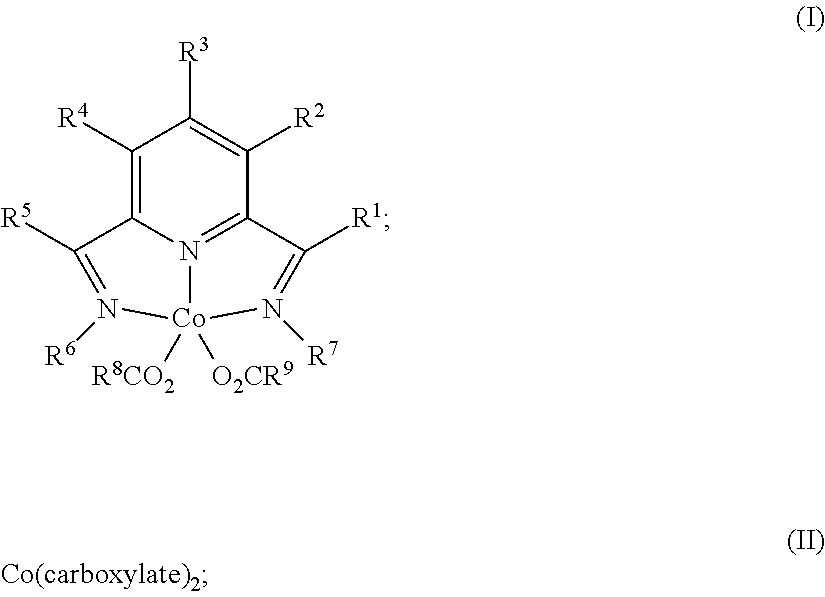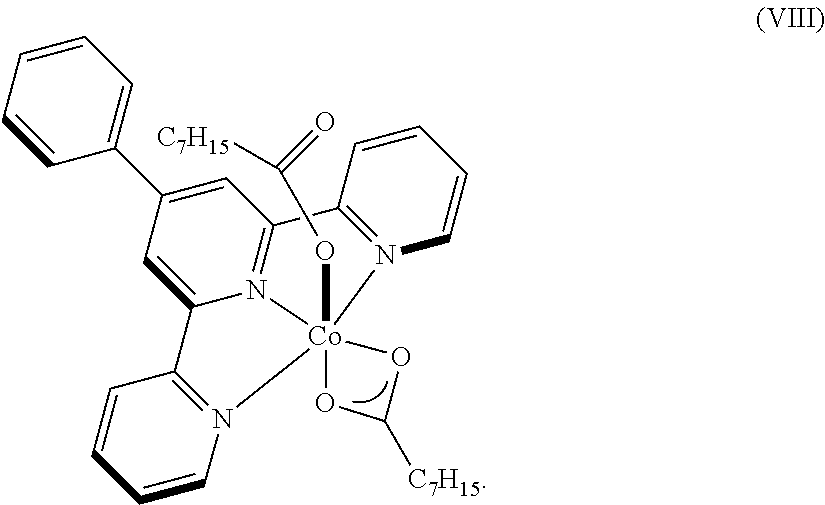Dehydrogenative silylation, hydrosilylation and crosslinking using pyridinediimine cobalt carboxylate catalysts
a cobalt carboxylate and catalyst technology, applied in the direction of organic compounds/hydrides/coordination complex catalysts, physical/chemical process catalysts, organic chemistry, etc., can solve the problems of limited methods, metal catalyzed hydrosilylation only works well, and the original substrate is unsaturated, etc., to achieve efficient catalyzing dehydrogenative silylation and/or hydrosilylation
- Summary
- Abstract
- Description
- Claims
- Application Information
AI Technical Summary
Benefits of technology
Problems solved by technology
Method used
Image
Examples
experimental and examples
General Considerations
[0116]All air and moisture sensitive manipulations were carried out using standard vacuum line, Schlenk, and cannula techniques or in an MBraun inert atmosphere dry box containing an atmosphere of purified nitrogen. Solvents for air and moisture sensitive manipulations were initially dried and deoxygenated using literature procedures (Pangborn, A. B. et al., Organometallics 1996, 15, 11518). Chloroform-d and benzene-d6 were purchased from Cambridge Isotope Laboratories. MesPDI was prepared according to the literature procedure (Grol, C., Alt, H. G. J. Mol. Catal. A: Chem. 2007, 273, 118). Bis(trimethylsiloxy)methylsilane (MDHM), (EtO)3SiH and Et3SiH were acquired from Momentive Performance Materials, dried over calcium hydride and distilled under reduced pressure prior to use. 1-Octene and allyl glycidyl ether were purchased from Aldrich, dried over calcium hydride and distilled under reduced pressure before use. Sodium 2-ethylhexanoate was purchased from Alfa ...
PUM
| Property | Measurement | Unit |
|---|---|---|
| temperature | aaaaa | aaaaa |
| temperature | aaaaa | aaaaa |
| temperature | aaaaa | aaaaa |
Abstract
Description
Claims
Application Information
 Login to View More
Login to View More - R&D
- Intellectual Property
- Life Sciences
- Materials
- Tech Scout
- Unparalleled Data Quality
- Higher Quality Content
- 60% Fewer Hallucinations
Browse by: Latest US Patents, China's latest patents, Technical Efficacy Thesaurus, Application Domain, Technology Topic, Popular Technical Reports.
© 2025 PatSnap. All rights reserved.Legal|Privacy policy|Modern Slavery Act Transparency Statement|Sitemap|About US| Contact US: help@patsnap.com



